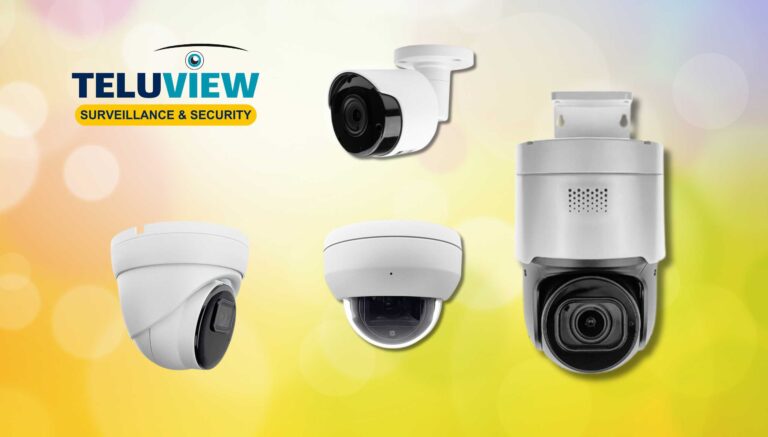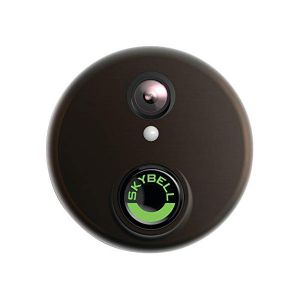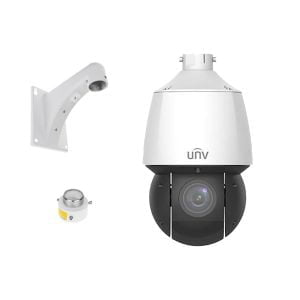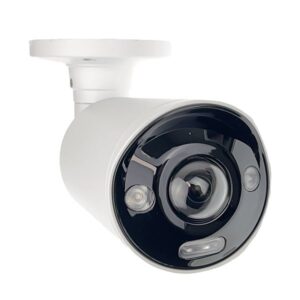Types of Security Cameras: A Comprehensive Guide

Introduction
In today’s world, security is a paramount concern for both homes and businesses. With advancements in technology, there are numerous types of security cameras available, each designed to cater to specific needs and environments. This comprehensive guide will walk you through the different types of security cameras, their features, and how to choose the best one for your requirements.
Table of Contents
Types of Security Cameras By Connectivity
Wired Security Cameras
Wired security cameras are traditional systems that use cables for both power and internet connectivity. These cameras are known for their reliability and high-quality video transmission. Ideal for large properties, they require professional installation due to the extensive cabling involved.
Wireless Security Cameras
Wireless cameras connect to the internet via Wi-Fi, offering flexibility in placement. They are easy to install and can be moved as needed. However, they rely on a strong Wi-Fi signal and might experience interference or security vulnerabilities if not properly secured.
Cellular Security Cameras
Cellular cameras use mobile networks to transmit data, making them perfect for remote locations without internet access. These cameras often come with higher data costs but provide unparalleled flexibility and ease of installation. A common form factor for this type of camera is the “Trail Cam” or “Game Cam”

Reolink Keen
Ranger PT Cellular Trail Camera
This outdoor camera utilizes a 4G cellular network for seamless internet connectivity, while its solar panel ensures continuous power supply. With easy installation, you can leave the camera in the field and remotely observe the surroundings.
Types of Security Cameras By Location
Indoor Security Cameras
Designed for monitoring the inside of buildings, indoor cameras often feature sleek designs and advanced functionalities like two-way audio and high-definition video. They are used for keeping an eye on pets, kids, and overall home security.
Outdoor Security Cameras
Outdoor cameras are built to withstand harsh weather conditions. They typically feature robust housings, infrared night vision, and motion detection capabilities to monitor property perimeters effectively.
Doorbell Cameras (Video Doorbells & Intercoms)
Doorbell cameras integrate with existing doorbells, providing video and audio communication with visitors. They are excellent for enhancing home security and monitoring entry points.

Alarm.com - SkyBell HD Bronze
Wi-Fi Doorbell Camera
With motion detection technology, SkyBell alerts you of any activity at your door, even if the visitor doesn’t ring the bell, enhancing your security measures.
Different Types of Security Cameras By Transmission Technology
Analog Cameras
Analog cameras are the traditional form of CCTV cameras that transmit video over coaxial cables. While they are more affordable, they offer lower resolution compared to their digital counterparts.
IP Cameras
Internet Protocol (IP) cameras send video data over a network, providing higher resolution and advanced features like remote viewing. They are suitable for modern security systems and can be integrated with other smart devices.
PoE Cameras
Power over Ethernet (PoE) cameras receive power and transmit data through a single Ethernet cable, simplifying installation. They offer high reliability and are often used in commercial settings due to their robust performance.
Types of Security Cameras By Form Factor
Dome Cameras
Dome cameras are named for their dome-shaped housing, which makes them discreet and vandal-resistant. They are commonly used in retail stores and public areas for wide-angle coverage.
Bullet Cameras
Bullet cameras have a long, cylindrical shape and are known for their high visibility and deterrence factor. They are typically used outdoors and provide a focused field of view.
Pan-Tilt-Zoom (PTZ) Cameras
PTZ cameras can pan, tilt, and zoom, offering extensive coverage and detailed monitoring. They are ideal for large areas like parking lots and can be controlled remotely for precise surveillance.

UNV 4MP PTZ Security Camera with a 25x Motorized Zoom Lens (IPC6424SR-X25-VFB)
Deep Learning IP67 Weatherproof PTZ
This state-of-the-art camera is equipped with a powerful 25x motorized zoom lens, AI autotracking, and LightHunter illumination technology, providing crystal-clear images even in challenging low-light environments.
Fisheye Cameras
A fisheye camera is equipped with a lens that captures an exceptionally wide-angle view, frequently surpassing 180 degrees. This type of camera can produce hemispherical or panoramic images. Fisheye lenses tend to distort straight lines near the frame’s edges, creating circular or bubble-like effects, mimicking the way a fish perceives its environment.
Turret Cameras
Turret cameras, also known as eyeball cameras, combine the benefits of dome and bullet cameras. They offer easy adjustment and installation, making them popular for both indoor and outdoor use.
Types of Security Cameras By Storage and Recording
DVR Security Systems
Digital Video Recorder (DVR) systems use analog cameras and convert video to digital format for storage. They are cost-effective and widely used but offer limited scalability and resolution.
NVR Security Systems
Network Video Recorder (NVR) systems work with IP cameras and provide higher resolution and easier scalability. They offer advanced features like remote access and integration with other security devices.
Cloud-Based Security Cameras
Cloud-based cameras store video footage on remote servers, allowing for easy access and management. They provide robust data security and are ideal for users who prefer not to maintain physical storage.
Types of Outdoor Security Cameras
Weatherproof Cameras
Weatherproof cameras are designed to operate in extreme weather conditions, including rain, snow, and heat. They come with IP ratings that denote their resistance to water and dust.
Night Vision Cameras
Night vision cameras use infrared technology to capture clear images in low-light conditions. They are essential for 24/7 surveillance and can deter nighttime intruders.

TeluView TLC-MS-WDT 4K Ultra HD Bullet IP Security Camers
24/7 Full Color Night Vision
Thanks to 2 integrated white light LEDs, the camera provides vivid color video even in low-light conditions. For environments with pitch-black darkness, 2 infrared LEDs offer traditional black-and-white night vision capabilities.
Motion Detection Cameras
These cameras trigger recording and alerts when motion is detected within their field of view. They help conserve storage space and ensure that critical events are recorded.
New Innovations in Security Camera Types
AI-Powered Cameras
AI-powered cameras use artificial intelligence to enhance surveillance capabilities. They can recognize faces, detect unusual activity, and reduce false alarms by distinguishing between humans and animals.
Thermal Cameras
Thermal cameras detect heat signatures, making them effective in total darkness and through obstructions like smoke or fog. They are often used in critical infrastructure protection and perimeter surveillance.
4K Ultra HD Cameras
4K cameras provide ultra-high-definition video, offering four times the resolution of standard 1080p cameras. They are ideal for areas requiring detailed video capture and forensic zooming capabilities.
Smart Home Integration Cameras
These cameras integrate seamlessly with smart home ecosystems, allowing users to control them via voice commands and automate actions based on smart home triggers.
FAQs
What are the main types of security cameras? The main types include wired, wireless, cellular, indoor, outdoor, doorbell, hidden, analog, IP, PoE, dome, bullet, PTZ, box, and turret cameras.
How do I choose between wired and wireless security cameras? Wired cameras offer reliability and high-quality video but require professional installation. Wireless cameras are easier to install and more flexible but depend on Wi-Fi strength.
What are the benefits of using IP cameras over analog cameras? IP cameras provide higher resolution, advanced features, and easier scalability compared to analog cameras, making them suitable for modern security systems.
Can outdoor cameras withstand extreme weather conditions? Yes, outdoor cameras are designed to be weatherproof and can operate in harsh conditions. Look for cameras with high IP ratings for better durability.
What features should I look for in a night vision camera? Key features include infrared illumination, long-range visibility, and clear image capture in low-light or no-light conditions.
Are cloud-based security cameras secure? Cloud-based cameras offer robust data security with encryption and remote access. However, it is crucial to choose reputable providers and follow best practices for securing cloud accounts.
Conclusion
Understanding the different types of security cameras is crucial for selecting the right system for your home or business. Each type has its unique advantages and is suited to specific environments and needs. Whether you prioritize ease of installation, advanced features, or robust performance, there’s a security camera out there that fits your requirements perfectly.
Related Posts
Additional Information
Article Title
Types of Security Cameras: A Comprehensive Guide
